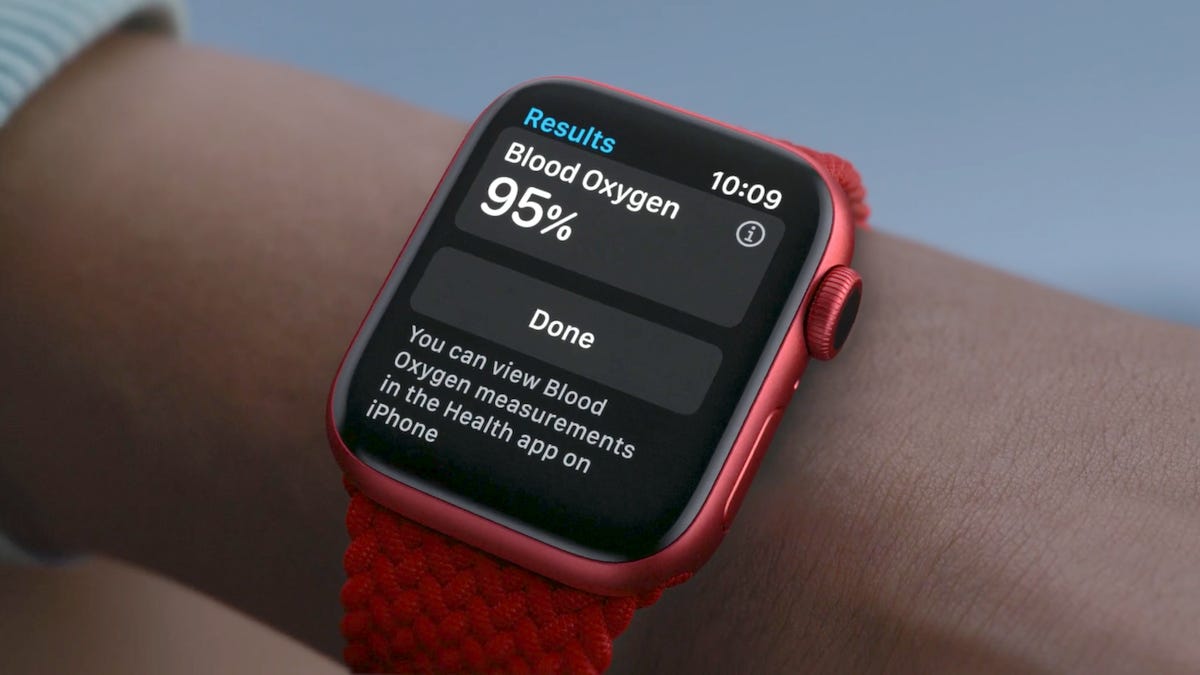Apple Watch Blood Oxygen app: How it works and how to use it
How to use the Apple Watch's newest health sensor, available with the Series 6.

The new Apple Watch Series 6 comes with a blood oxygen sensor and an accompanying app to give you more ways to monitor your heart and respiratory health. Together they measure your oxygen saturation (SpO2) in your blood -- how much oxygen from your lungs your red blood cells pick up and transport to all of the other parts of your body.
Low blood oxygen levels, or hypoxemia, have been linked to COVID-19 because the disease affects your ability to get enough oxygen. Doctors have used SpO2 levels to determine the severity of COVID-19 cases and treat those patients accordingly.
But hypoxemia can be caused by many other heart and lung issues, such as asthma, pneumonia and congenital heart disease. By monitoring your SpO2, your Apple Watch might be able to warn you of potential health issues before you realize you have them, or at least that's Apple's hope, anyway.
Here's how to use the Blood Oxygen feature on the Apple Watch Series 6 -- it's currently only available for the Series 6, not any other models. Also worth noting that Apple says on its website the Blood Oxygen app isn't available in all countries or regions. You'll be able to see when you set up the app if you can use it or not.
How does the blood oxygen sensor work?
The blood oxygen sensor is built into the back of the Apple Watch. It uses four clusters of red, green and infrared LED lights and four photodiodes, devices that convert light into an electrical current. The lights shine onto the blood vessels in your wrist and the photodiodes measure how much light bounces back.
I won't get into the medical specifics, but essentially oxygenated and deoxygenated blood absorb red and infrared light differently, so the light that bounces back allows the Apple Watch to determine the color of your blood.
Bright red blood is oxygenated, while dark red blood has less oxygen, either because it's been delivering oxygen to your organs and muscles or it's not getting enough oxygen from your lungs.
If you want to dig into exactly how pulse oximeters work, check out this article published in the Respiratory Medicine medical journal.
How do you use the Blood Oxygen app?
With the Apple Watch Series 6, you can get an on-demand reading of your SpO2. To get started, Apple says to make sure the wrist fits snugly on your wrist, but still feels comfortable.
Next, open the app and follow the prompts on the screen. Make sure your wrist is flat and the watch is facing up. Stay still while the Apple Watch starts the reading.
The reading takes 15 seconds, and once it's done you'll see the percentage of oxygen in your blood pop up on the watch screen.
According to Apple, to get the best results you should rest your arm on a table or in your lap and make sure the watch sits flush with your wrist. If your wrist bone gets in the way of that, move your watch up your arm.
You can set up background measurements so that your Apple Watch takes periodic readings throughout the day when you're inactive, like when you're lying on the couch or sleeping. You can toggle on that setting in the Blood Oxygen app.
All of your blood oxygen readings will sync to the Apple Health app.
Factors that can affect the reading
As with any biometric sensors on a watch, there are various factors that can affect the results you get from the Blood Oxygen app.
People with tattoos on their wrist may get false readings because the tattoo ink can make it hard for the light to reach your blood vessels. The amount of blood flowing through your skin, which can be affected by the temperature around you and varies from person to person, can also affect the results.
It's also important to stay still and have your arm resting with your fingers relaxed to get an accurate reading. If your arm is hanging by your side or your hand is making a fist, Apple says that you might not be able to get a reading.

